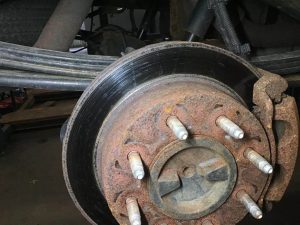We are OPEN!
We are remaining open during the COVID-19 pandemic as we service a wide variety of vehicles in which our community relies on including emergency and delivery vehicles.
Please know we have extended our PICK-UP and DELIVERY service to all customers to help minimize the impact and provide peace of mind!
Call us today at 413-314-2423 or click the link below to schedule your vehicle! For more details on our efforts to combat COVID-19, check out our letter by visiting this post: https://rb.gy/qvxbgw
 Similar to gas mileage, the wear and tear on your brakes will vary depending on where and how you drive. Disc brakes tend to wear out faster because they slow the vehicle by creating friction with the brake pads, and will eventually need to be replaced. Maintaining your disc brake rotors is critical to the overall safety and handling characteristics of your vehicle. If you suspect that your rotors may be worn or damaged, watch out for these signs and symptoms:
Similar to gas mileage, the wear and tear on your brakes will vary depending on where and how you drive. Disc brakes tend to wear out faster because they slow the vehicle by creating friction with the brake pads, and will eventually need to be replaced. Maintaining your disc brake rotors is critical to the overall safety and handling characteristics of your vehicle. If you suspect that your rotors may be worn or damaged, watch out for these signs and symptoms:
